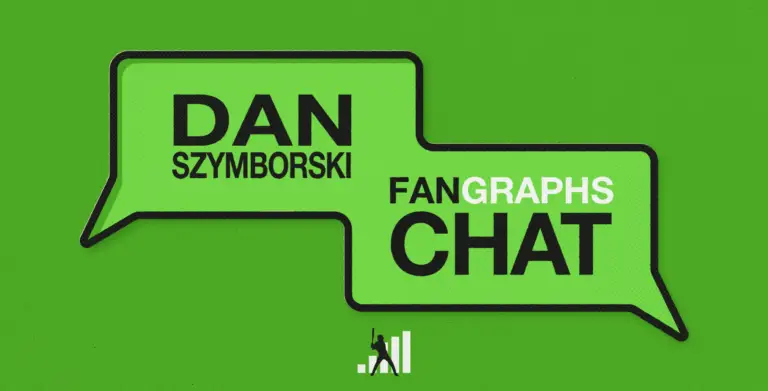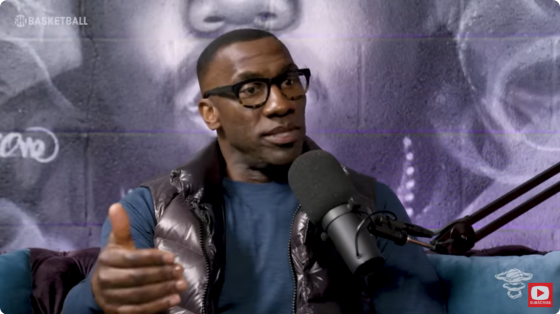
The Rangers clearly want to avoid the competitive balance tax in 2025. Evan Grant of the Dallas Morning News reported as much way back in October and owner Ray Davis confirmed that plan to Grant in January.
There are likely a few reasons for the club taking this route. The Rangers were one of several clubs which had a broadcast deal with Main Street Sports, formerly known as the Diamond Sports Group. As that company was going through bankruptcy, several clubs saw their contracts fall apart. Some of those organizations renegotiated new deals with the company but with lower fees. Other wound up with the league running their broadcasts.
The Rangers took a different approach and decided to launch their own regional sports network (RSN). Several big market clubs own RSNs, either in whole or in part, and many of them are doing well financially. The Rangers may have taken a smart route in the long run but it also might take some time to get it set up from scratch.
With that uncertain financial situation, the club decided it would be a good time to reset its CBT status after paying the tax in 2023 and 2024. Teams face increasing tax rates for paying the CBT in consecutive years. A team that avoids the tax in one year can then go into the following year as a “first-time” payor. Most teams like to limbo under the line from time to time, just to go back to square one.
But the Rangers still wanted to compete. They signed multiple players this offseason, including Nathan Eovaldi, Joc Pederson, Kyle Higashioka, Patrick Corbin, Kevin Pillar and a whole bunch of relievers. In the end, they came close to the line without going over it, at least according to publicly available metrics. RosterResource currently pegs them at $236.4MM, less than $5MM from the $241MM base threshold. Cot’s Baseball Contracts has them even closer at $237.8MM. Those are just estimates but they are probably close to accurate, given that the club wanted to be a bit under.
However, a club’s CBT number isn’t calculated until the end of the season, with any in-season developments being factored in. That includes contract bonuses/incentives for guys already on the club. Any players added midseason, such as in deadline trades, would also count.
That will be a situation worth watching in the coming months as the Rangers are currently atop the American League West with a 14-10 record. Assuming they stay in the race into the month of July, they should be deadline buyers. But if they want to stay under the tax, they may need their moves to be revenue neutral, or they might even need to move some money off their books.
Creeping just barely over the line wouldn’t lead to a massive tax bill. The club would be a third-time payor and subject to a 50% base tax rate. A hypothetical overage of $1MM would only lead to $500K in taxes, which is nothing for a baseball club. But it would mean the club would also face a 50% base tax rate in 2026, whereas ducking under the line this year and becoming a “first-time” payor means a 20% base tax rate next year. Avoiding the tax also changes the penalties and compensation for qualifying offer situations, providing another incentive to a team to stay under the line if they are near it.


In short, the CBT number is a living, breathing thing which will be moving throughout the year and it should have a real impact on the club’s deadline approach. There are many players with bonuses in their contract, but Tyler Mahle is the most notable with $5MM. Assuming the calculations of the club’s current CBT number are correct, that means he can single-handedly push them over the line.
Mahle was coming off May 2023 Tommy John surgery when the Rangers signed him to a back-loaded deal heading into 2024. It was a two-year, $22MM guarantee, with the Rangers knowing they likely wouldn’t get much in 2024. As such, they only paid him $5.5MM in the first year, followed by $16.5MM in 2025 with $5MM also available in incentives.
As expected, the Rangers didn’t get much from Mahle last year. He came off the injured list in August and made just three starts before some shoulder tightness put him back on the IL again. He stayed there for the remainder of the campaign.
Now in 2025, the Rangers seem to be getting what they hoped for. Mahle has been healthy and also in excellent form. He has a 0.68 earned run average though his first five starts. There’s a bit of luck in there from a .156 batting average on balls in play and 90.9% strand rate but he’s been a big part of their early-season success regardless.
The only downside for the Rangers is that Mahle’s bonuses are very achievable. MLBTR has learned that he gets an extra $500K for getting to 100 innings, $1MM each at 110, 120 and 130 innings, then $1.5MM at 140 innings.
He’s not a lock to earn the full $5MM, as he only has one season in his career where he got to 140 innings. He was still getting optioned to the minors at times in 2018 and 2019 and then fully established himself during the shortened 2020 season, before logging 180 frames in 2021. Shoulder troubles capped him at 120 2/3 in 2022, and then the aforementioned Tommy John surgery limited him in the following two seasons. Still, with the Rangers so close to the line, it could be a notable development even if he gets into triple digits and nudges them closer a million or two.
If he stays healthy, he would unlock the full $5MM easily. The Rangers might be tempted to back off his workload, as they did with Andrew Heaney in 2023. Heaney had a $13MM player option for 2024, which would bump up to $20MM if he hit 150 innings in 2023. The Rangers moved him to the bullpen to prevent that from happening, with Heaney finishing the year at 147 1/3 innings.
Doing the same with Mahle might be tricky if he continues pitching well. The Rangers have Cody Bradford, Jon Gray and Jack Leiter on the injured list. Kumar Rocker has a 6.38 ERA through four starts this year. Corbin is holding his own right now but hasn’t had an ERA under 5.00 in a full season since 2019. Jacob deGrom and Eovaldi are out to good starts but each is in his mid-30s with a notable injury track record. In short, this team might need Mahle more than the 2023 Rangers needed Heaney.


There are other players who could also factor in to lesser degrees. Luke Jackson is the second most notable after Mahle, as he is earning a $1.5MM base salary but could earn as much as $4MM via incentives, an extra $2.5MM. He can unlock $75K for pitching in 20 games, $100K at 25, $125 at 30, $150K at 35, $175K at 40, $225K at 45, $250K at 50, $300 at 55 and $350K at 60. That’s potentially an extra $1.75MM just for appearances. There’s another $750K for games finished: $50K for 25, $100K for 30, $150K for 35, $200K for 40 and $250K for 45. He has taken over the club’s closer role in the early going and already has nine games finished and ten appearances overall.
Corbin has batches of bonuses based both on innings pitched and relief appearances, so he should get paid some extra money as long as he’s healthy, regardless of which role the Rangers have him in. He gets $100K at 40 and 55 innings, $150K at 70 and 85, $200K at 100 and 115, $250K at 130, 145 and 160, then $350K at 170. He also gets $100K for 35 relief appearances, $150K for 40, $200K for 45, $250K for 50, $300K for 55. He’s in the rotation for now and those relief appearance bonuses are unlikely to be a factor, but he could certainly earn more money based on innings pitched. Getting to 170 innings pitched and unlocking all the bonuses would be an extra $2MM.
Chris Martin can earn an extra $150K by getting to 45 innings pitched this year and again at 50 frames, followed by $200K at 55 innings. Hoby Milner can get an extra $100K at 35 and then 45 innings, then an extra $150K at 55 and 65. Jacob Webb is making $1.25MM this year but can get that to $1.5MM via incentives worth $250K. MLBTR has learned that Webb gets $50K at 20, 30, 40, 50 and 60 innings pitched. Josh Sborz can unlock an extra $25K at five innings, $50K at 10, $75K at 15, $100K at 20. He underwent shoulder surgery in November and is expected to miss at least the first half of the season.
deGrom and Eovaldi have the same awards bonuses. They can earn an extra $250K for winning the Cy Young this year, as well as $200K, $150K, $100K or $50K for finishing second, third, fourth or fifth in the voting. They can also get $150K for winning World Series MVP, as well as $100K for getting an All-Star selection, a Gold Glove award, or LCS MVP. Pederson can get an extra $150K for winning MVP, $100K for an All-Star selection or World Series MVP, plus $50K for for a Silver Slugger or LCS MVP.
All of those bonuses could nudge the Rangers closer to the line or even over it, which will make for an interesting balancing act this summer. As mentioned, they will almost certainly be looking for upgrades as the deadline rolls around but they might also have to move some money around if they continue to plan on avoiding the tax.
Pederson is out to an awful start, so maybe they try to flip him somewhere else, though they would surely have to attach prospect talent in order to convince another club to absorb his contract. He is earning $13MM this year and will be owed $18.5MM next year. He can opt out after 2025 with the club able to override that by picking up a two-year option at $18.5MM annually for 2026 and 2027. If he continues struggling, he will obviously not take that opt-out.
Gray is making $13MM this year, the final season of his contract. He has been on the injured list all season due to a wrist fracture and it’s unclear when he’ll be back. It’s possible the Rangers won’t need him in the rotation once he’s healthy, depending on how others are performing. His deal has an AAV of $14MM, so trading him just ahead of the deadline could shave almost $5MM off the club’s CBT number. However, doing so would subtract from the club’s rotation depth. His trade value will also depend on how he heals up and performs in the coming months.
There are a great many factors at play here, but taking them all into consideration, it feels as though the Rangers are going to be right near the edge. If they abandon their desire to avoid the tax, that could simplify a lot. But if not, they will have to be watching all these numbers in the coming months.
Photos courtesy of Jerome Miron, Imagn Images





